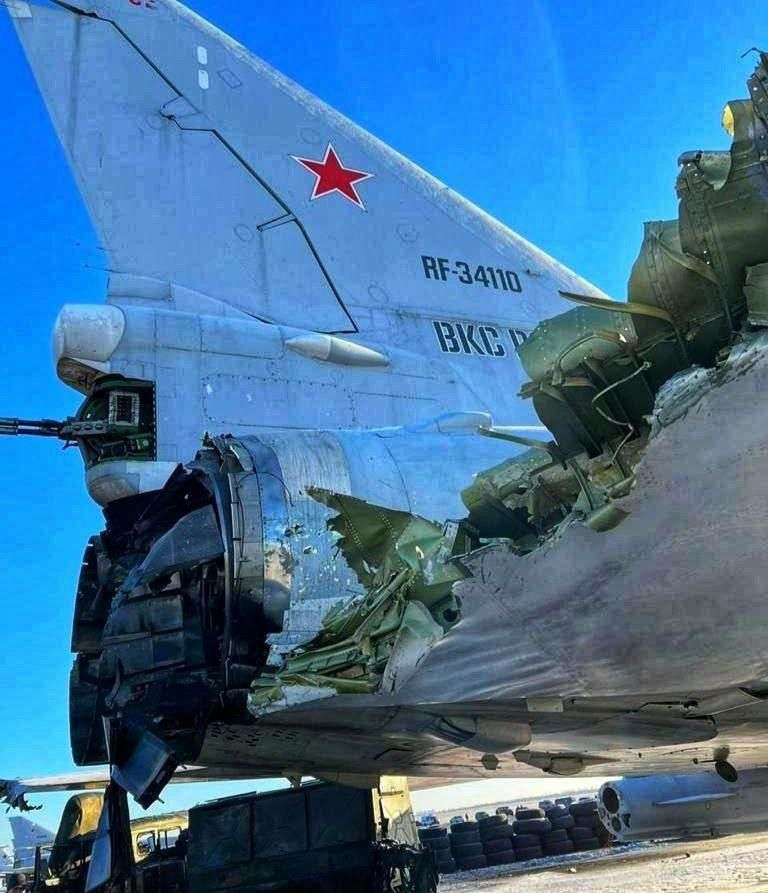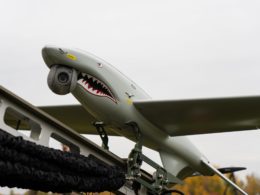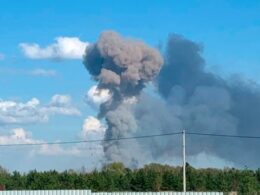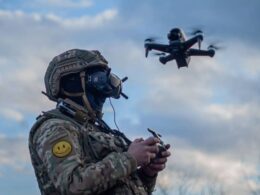Ukraine's ability to deliver long-range drone strikes on airfields in the Russian rear, more than 700 km from the Russo-Ukrainian border, is a new factor in the war that may have a strategic impact.
1. Ukraine finds brand new way to deal with Russian missile terror
Since October, Russia has sent barrages of cruise missiles into Ukrainian critical infrastructure, taking out 50% of its power grid in the face of a cold winter. Ukraine's air defense has gotten increasingly better at shooting down the missiles, but its officials have repeatedly stressed that Ukraine needs to deal with the source of the threat -- Russian airbases. While Ukraine still lacks long-range missiles, it has found a creative way to deal with the problem.
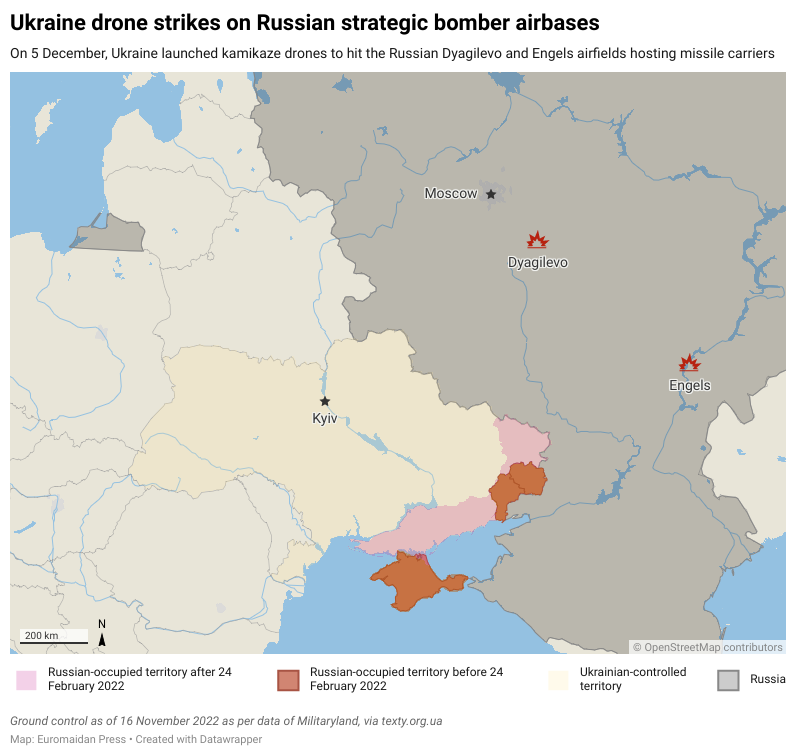
On 5 December 2022, the sudden attack of kamikaze drones targeted two airfields in Dyagilevo (Ryazan Oblast, Russia) and Engels (Saratov Oblast, Russia), which is the most distant series of strikes carried out by the Ukrainian Armed Forces during the nine-month-long war. The Russian airbase in Dyagilevo is located approximately 470 km from the Russo-Ukrainian border, while the airfield in Engels is more than 700 km from Ukraine. Both airbases house elements of Russia’s strategic bomber fleet, which Russia has employed to strike Ukraine throughout the war, according to the Institute for the Study of War (ISW).
Photos allegedly taken at the airbase in Dyagilevo leaked on social media the same day, on 5 December 2022, when the kamikaze drones attacked the Russian strategic bomber aircraft stationed in the runway safety area of the airfield.
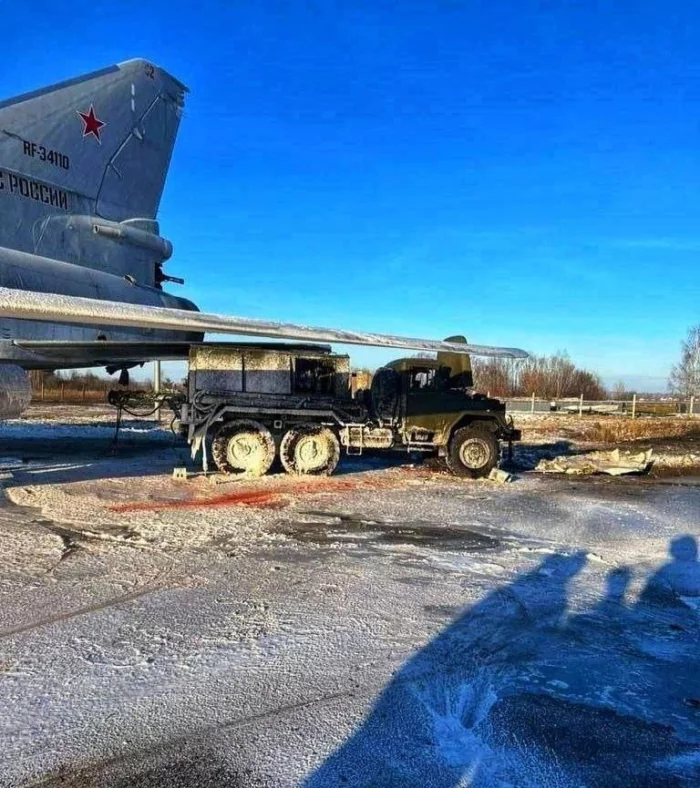
The photos taken at the airfield in Dyagilevo combined with the satellite image provided by ImageSat Intl. (ISI) show that at least one Russian strategic bomber aircraft Tu-22M3 was damaged by the kamikaze drone attack on 5 December. Russia uses Tu-22M3 and a number of other strategic bomber aircraft stationed at the airfields in Dyagilevo and Engels to launch missile attacks on Ukraine from Russian airspace.
New Imagery of the aftermath of the attack on the #Russian #Dyagilevo airbase today - burn marks near a Tu-22M bomber. pic.twitter.com/NVlzhXcSse
— ImageSat Intl. (@ImageSatIntl) December 5, 2022
The photo of the damaged Tu-22M3 strategic bomber at the airfield in Dyagilevo clearly shows that at least one cruise missile Kh-22 was attached to the aircraft when it was attacked by the kamikaze drone (s). Obviously, more than one such missile was supposed to be launched by this aircraft, which was probably struck hours before the take-off, according to the Ukrainian war reporter and military analyst Yurii Butusov.
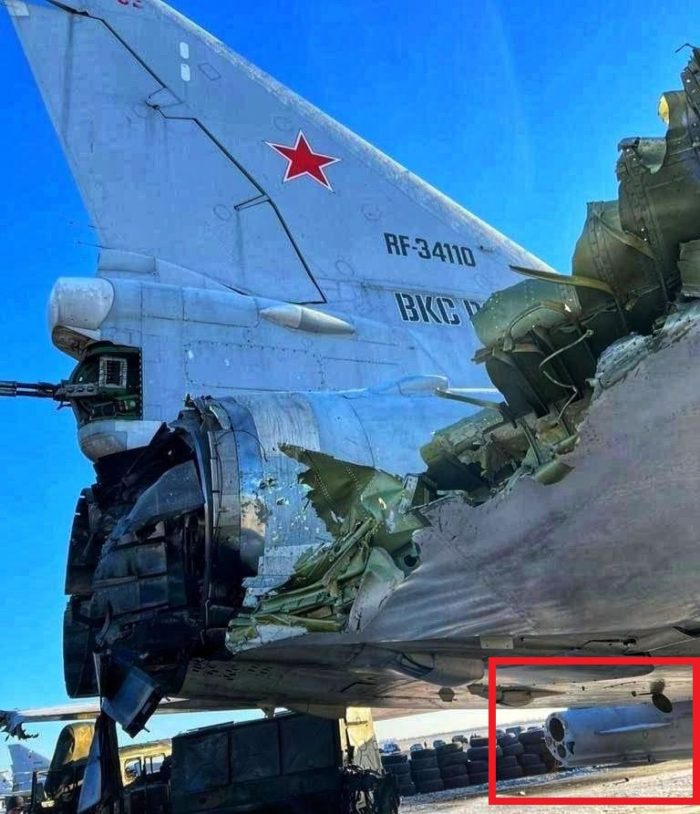
The Ministry of Defense of the Russian Federation confirmed that two more strategic bomber aircraft were damaged by the kamikaze drone attacks on the Russian airfields in Dyagilevo and Engels. The Ukrainian war reporter Yurii Butusov suggests that the drone strikes damaged two Russian strategic bombers Tu-95MS with at least 6-12 missiles attached to them. The damage took these aircraft out of the Russian massive missile attack on Ukraine, which had been planned beforehand and was launched later on, on 5 December 2022.
Therefore, the timely kamikaze drone attacks on Russian strategic airbases saved Ukraine from additional missile barrages that could have been launched by the damaged bomber aircraft. The Ukrainian drone attack partially disrupted the strategic operation of the Russian Armed Forces, which is unprecedented.
For the first time in history, the strategic bomber aircraft of a nuclear power were hit directly at the airbase in the deep rear, where they were stationed. Moreover, for the first time since the Second World War, combat aerial vehicles have managed to break through the Russian air defense unnoticed and strike at the Russian forces in central Russia.
2. Ukraine may further exploit Russian failure to deal with drone attacks
Although Ukraine neither confirms nor denies it launched a strike on the Russian military airfields, the very possibility of such a strike may force Russia to reassess its strategy aimed at the destruction of the Ukrainian critical civilian infrastructure.
Russia claims Ukraine targeted its remote airfields with UAVs; Ukraine neither confirms nor denies
This is not the first case of Ukrainian drone attacks on Russian airfields over the past nine months of the Russo-Ukrainian war. On 7 October 2022, Ukrainian unmanned aerial vehicles attacked the Russian airfield in Shaikovka, which is 200 km from Ukraine. Those strikes made Russia push back its strategic bomber aircraft to the airfields in Dyagilevo and Engels, which seemed to be out of reach for any Ukrainian armed drone attacks.
There is no doubt that the Ukrainian long-range strikes at the Russian strategic airbases located more than 400 km from Ukraine mark the breakthrough technological success of the Ukrainian Armed Forces. The Ukrainian ability to strike targets in the Russian rear this far from Ukraine will have a strategic impact on the course of the Russo-Ukrainian war, according to Mick Ryan, the Australian strategist and retired Army Major General.
At this point, it is not clear what weapons were employed by the Ukrainian Armed Forces to attack the Russian strategic airbases in Engels and Dyagilevo. However, two weeks ago, in November 2022, Ukraine's state defense concern Ukroboronprom reported it was finishing the production of new Ukraine's unmanned aerial vehicles (UAVs) capable of carrying 75 kg of explosives aimed at striking targets within the range of 1000 km. The long-range armed drone has already passed first tests. Thus, it is highly likely Ukraine may have employed its newly produced UAVs to hit the Russian strategic airbases on 5 December 2022. If that is true, the Ukrainian drone attacks of the Russian rear mark the beginning of a new chapter in the Russo-Ukrainian war.
All airfields and military infrastructure in Russia within the range of 1000 km from Ukraine may be vulnerable to the Ukrainian kamikaze drone attacks. The fact that the Russian air defense system has trouble to deal with such a threat is yet another important takeway of the Ukrainian drone strikes on the strategic airbases in Russia.
3. Ukraine has capability to attack Moscow
Selected Russian military bloggers noted that Russian military leadership has failed to adequately protect the strategic airbases, despite knowing that such bases were clear targets for the Ukrainian strikes, the ISW reports
. Although several Russian milbloggers claimed that Ukrainian sabotage and reconnaissance groups may have launched the strike against Engels airbase from inside the Russian territory, the assertion that the UAVs were launched from the Ukrainian territory seems to be more popular among Russian military analysts, according to the ISW. The ability of Ukrainian UAVs to strike targets within the operating range of around 1000 km means that the Russian capital Moscow is under threat from Ukrainian territory now.
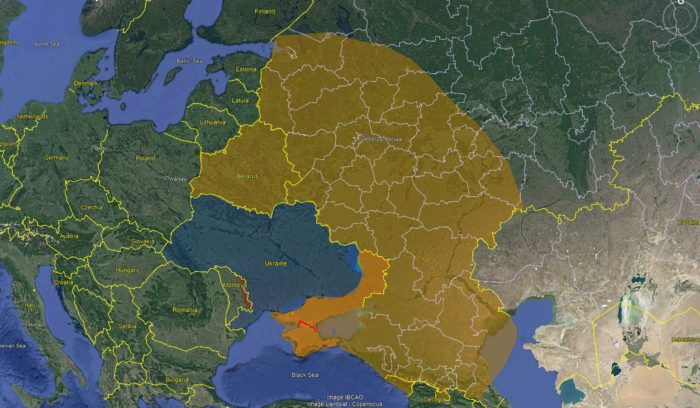
The Russian military bloggers believe that Ukraine employed Tu-141s armed drones designed in the Soviet Union in the 1970s and 1980s, Mick Ryan reports. There have also been an unknown quantity of such drones in service with the Ukrainian Armed Forces since 2014. With an operating range of about 1000 kilometers, the strikes at the Russian strategic airbases in Dyagilevo and Engels would have been well within the capacity of the old Soviet drones Tu-141s.
Despite the fact that it is not clear what drones Ukraine employed to attack the Russian airfields on 5 December, the ability of the Ukrainian forces to strike within the operating range of 1000 km has a symbolic meaning in the Russo-Ukrainian war. Before this drone attack, only Russia could strike at the capital city of its enemy.
From now on, Ukraine is able to attack the Russian capital Moscow. Whether the Ukrainian Armed Forces would resort to such an option is unclear. However, the very possibility of a devastating strike at the military infrastructure in Moscow as a retaliation for the Russian missile attacks on the critical civilian infrastructure in Ukraine might be the third important thing to have a strategic influence upon the course of this war.
Related:
- Explosions reported in airfields of strategic aviation bases of Russia
- Ukraine’s air defense improved fourfold since start of Russian invasion
- Mass power outages as Ukraine again under mass Russian missile strike - updated
- Ukraine needs the capability to attack Russian airfields – former commander US Army Europe
- Ukraine needs long-range missiles to really win the war, country’s top generals say

